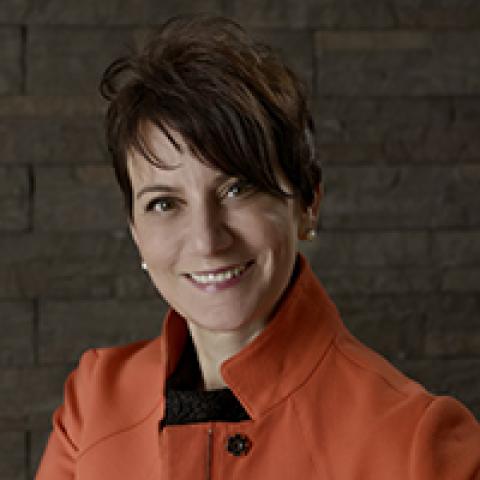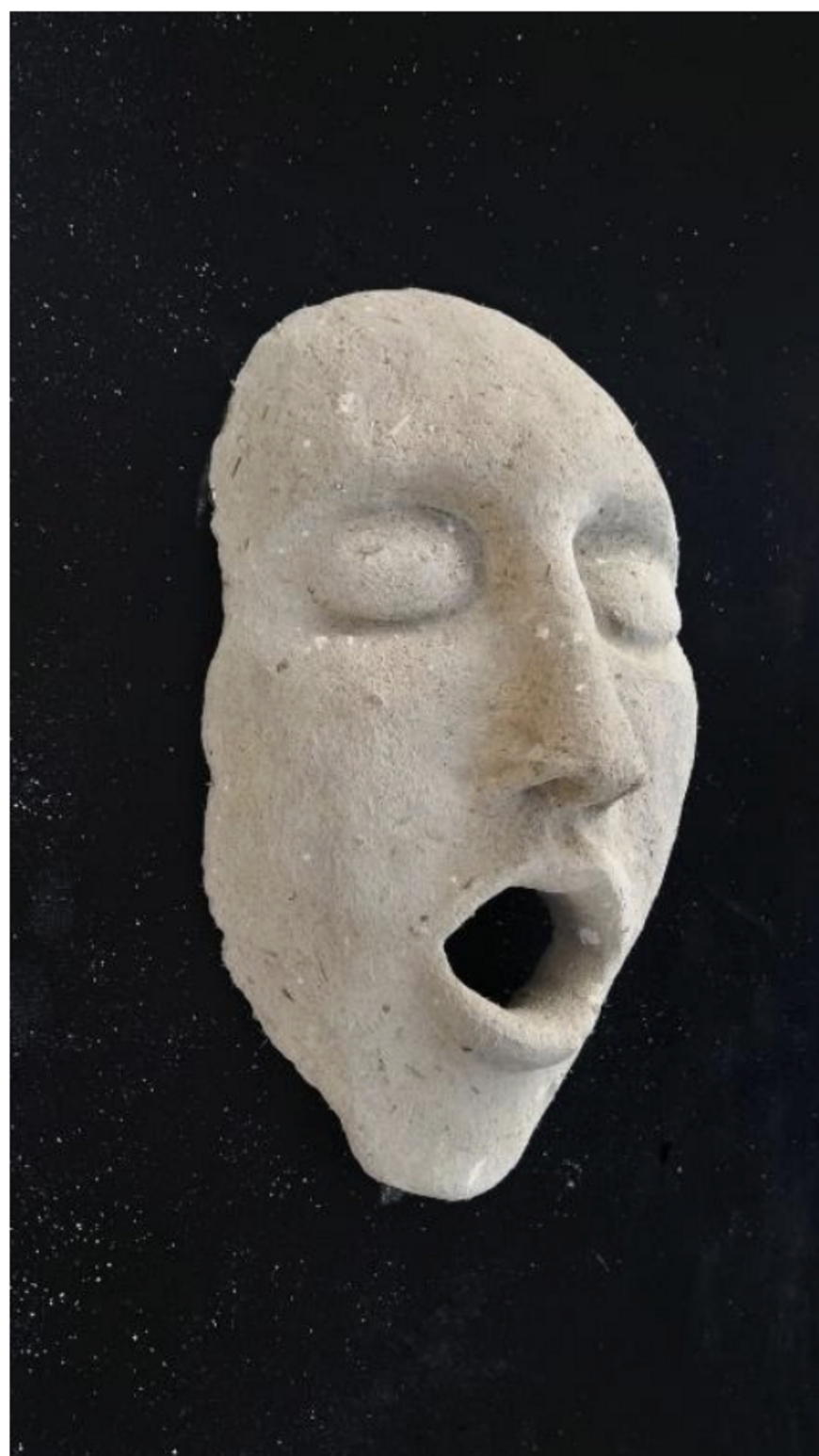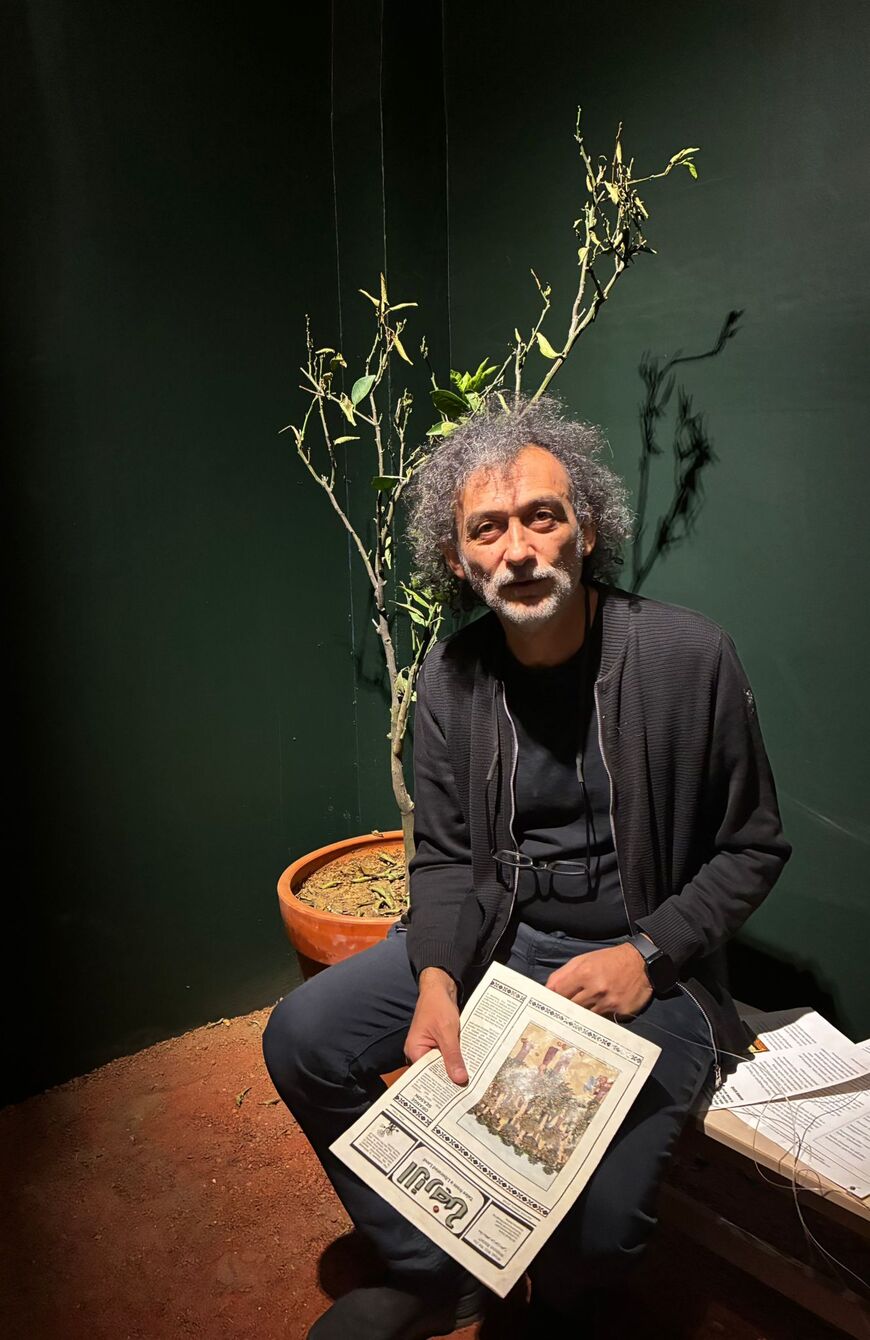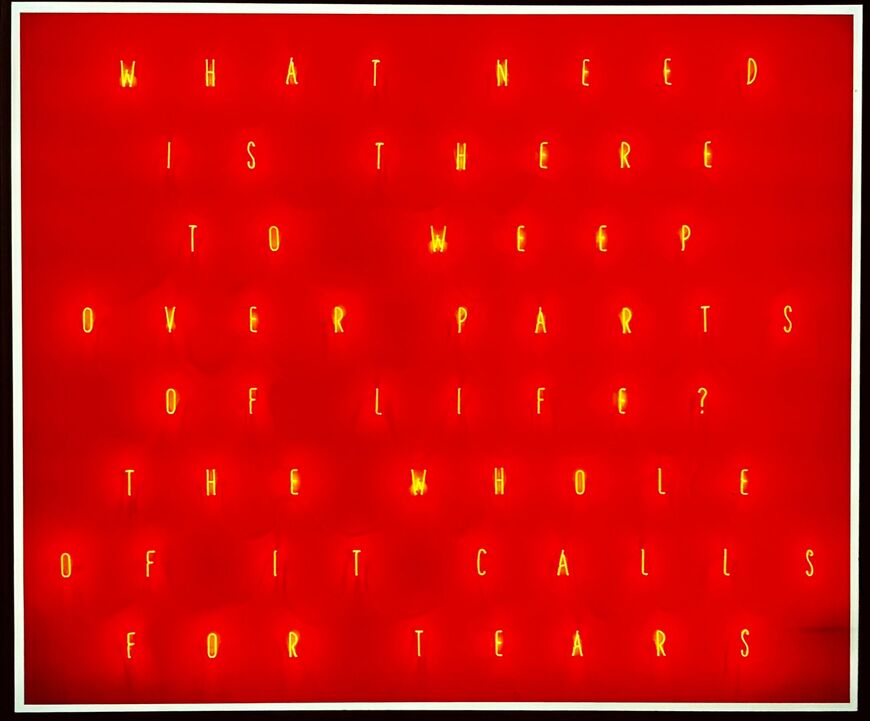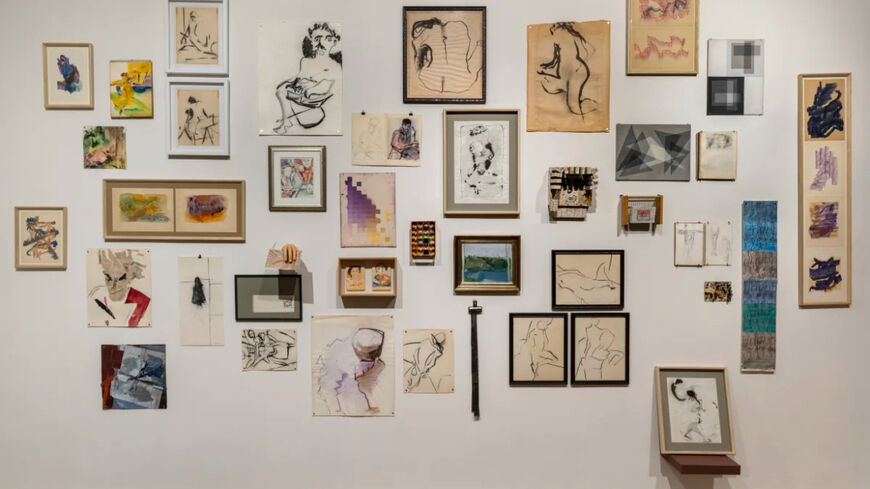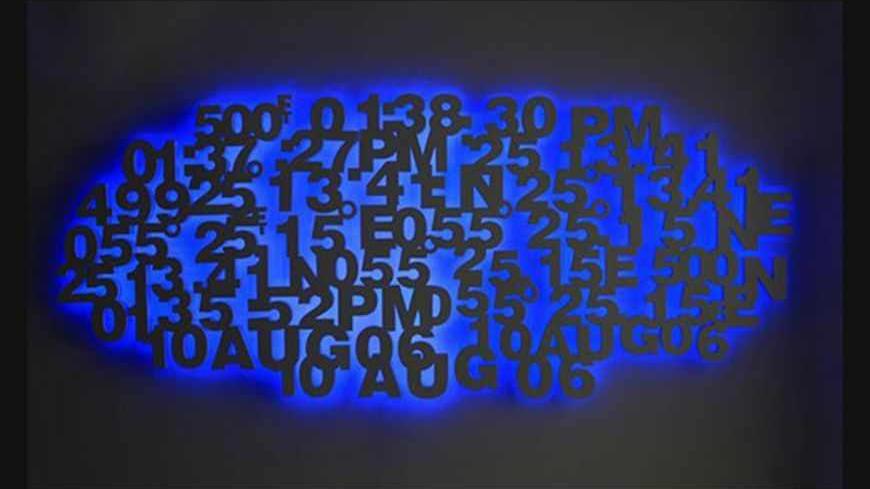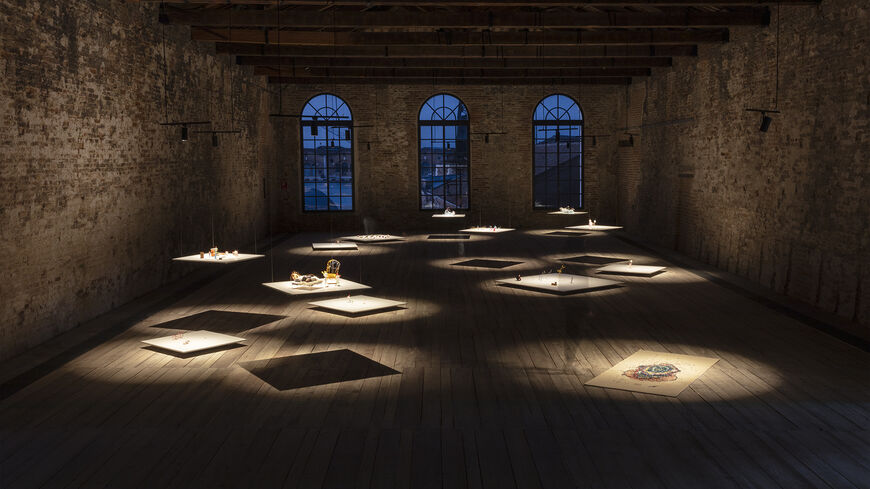Gaza artists' unorthodox biennial finds a home in Istanbul
The Gaza Biennale — Istanbul Pavillion, themed “A Cloud in My Hand,” reflects Gaza artists’ quest for survival as well as their hopes for a postconflict homeland.
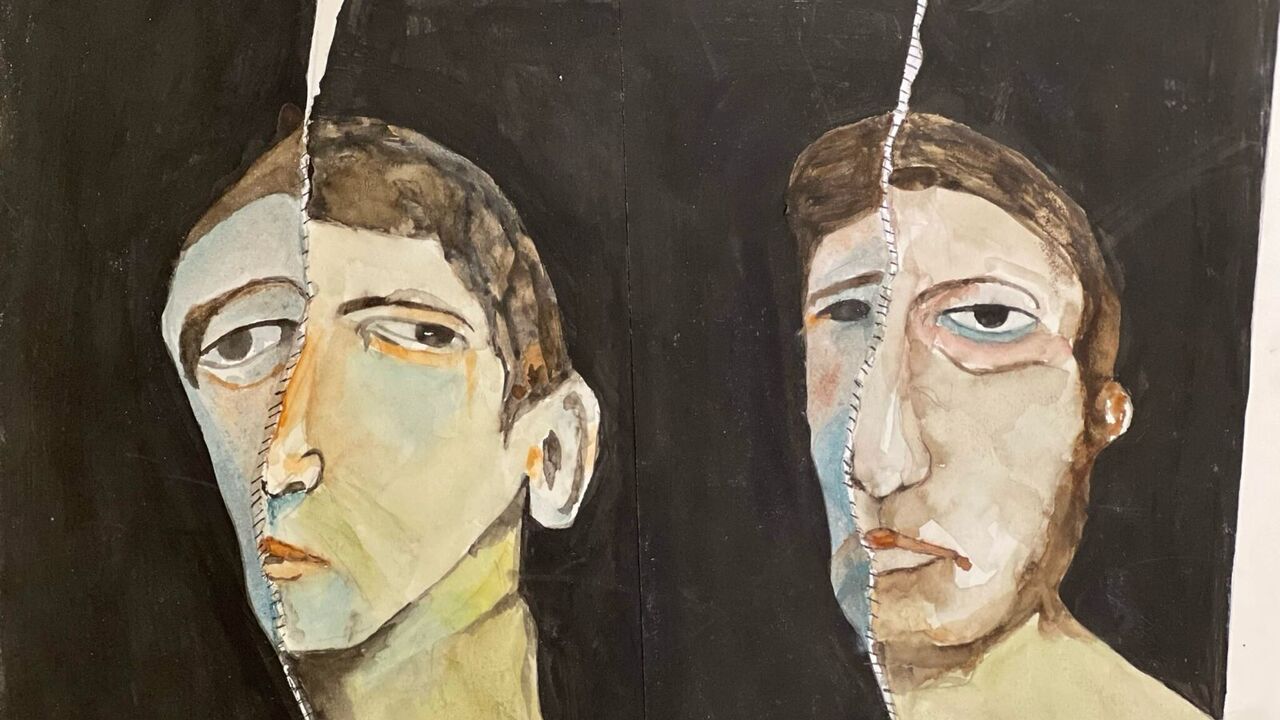
Even before starting a tour of Gaza Biennale — The Istanbul Pavilion, its curator warned that this is no ordinary biennial. Indeed, it is quite the opposite.
“The biennial is one of the most colonial inventions in contemporary art,” said Shulamit Bruckstein, founder of House of Taswir, which co-curated the show. “It was born of world’s fairs and national pavilions. We turned it inside out. The Gaza Biennale is completely diasporic and dispersed, a collective act of joint production.”
Launched in 2024 by a handful of artists on a Gaza beach under siege, the Gaza Biennale has grown into a constellation of independent “pavilions” stretching from London, Berlin and Athens to Toronto, Washington and New York. Each city curates its own response, drawing on the same pool of Gazan artists and redefining what an international biennial can look like when the center does not hold.
“I love this way of working,” Bruckstein, a Berlin- and Istanbul-based curator and philosopher, told Al-Monitor. “We didn’t only create a biennial; we created a way of working. When you can’t exhibit, you invent new forms of showing. When you can’t travel, the exhibition travels to you.”
Gaza Biennale — The Istanbul Pavilion is taking place at the same time as the Istanbul Biennial, the city’s flagship art event, which runs until the end of November. The 18th edition of the Istanbul Biennial, “The Three-Legged Cat,” curated by the Lebanese artist-activist Christine Tohme, also has a strong Palestinian backbone, including works by Soheil Salem, whose ink-on-paper Gaza diaries are also being exhibited at the Gaza exhibition.
This edition of Gaza Biennale – The Istanbul Pavilion, themed “A Cloud in My Hand,” is spread across two floors of the Depo Istanbul, in the Tophane quarter, walking distance from many of the Istanbul Biennial’s venues. To realize the Istanbul Pavilion, the House of Taswir and associates collaborated with the Gaza Biennale Initiative; the Forbidden Museum of Jabal al-Risan, in Ramallah; and Addar, a community center for Palestinians and Syrians, in Istanbul.
More than 50 artists are represented through reconstructed works, texts and voice recordings — a “multi-voiced act of cultural survival,” as Bruckstein puts it. Many of the artists could not leave Gaza, nor could their works travel. Others, already in Egypt or the United Arab Emirates, were grounded by visa and transport barriers.
More than once, Turkish co-curator Kubilay Ozmen traveled abroad to physically retrieve works and bring them to Istanbul. Mostly, however, curators and artists worked through encrypted WhatsApp calls, exchanging images of paper textures and print proofs for approval, a process Bruckstein called “co-production at a distance.”
“We created a biennale without artworks and without artists,” she said. “In a few minutes of connection, new works were born. Some artists sent notebook drawings, others only photographs. We turned them into eight-meter murals or prints on pine wood, where the grain becomes part of the image.”
Ozmen added, “We didn’t want a photography show. We needed to re-create originals.”
From paper to wall narrative
The first work that greets visitors is by Mohammed Alhaj, a Libyan-born Palestinian artist from Gaza. It depicts a semi-abstract figure, bare-chested and wearing a traditional kaffiyeh, who wanders between Gaza and the West Bank in search of belonging, a symbol of vulnerability and endurance.
Alhaj sent images of four or five small notebook drawings from Gaza — modest sketches of rural life as he imagined it, some of which have now been lost as a result of his many displacements. Together with the Turkish artist Furkan Akhan, the curators transformed his contributions into an eight-meter storyboard mural.
“The story of that mural is also the story of the exhibition’s title,” Bruckstein recalled. “A friend saw an image of a white horse and immediately thought of Mahmoud Darwish’s ‘Don’t Leave the Horse to Others.’ That remark sent us to the library. We opened the collection and saw the poem ‘A Cloud in My Hand.’ Those associative steps shaped the exhibition’s inner architecture.”
Survival and creation
Some of the other works in the exhibition also combine image with text. The young Palestinian artist Alaa Al-Shawa’s “Fragile Masks,” a double portrait of restitched faces, is paired with a poem by Mosab Abu Toha:
In Gaza, breathing is a task
smiling is performing
plastic surgery
on one’s own face,
and rising in the morning,
trying to survive
another day is coming back
from the dead.
“We felt their quest for survival,” Ozmen told Al-Monitor. “This was a biennial during whose preparation we worried about losing not artworks, but artists.”
The fragility of life, and the thin line between survival and loss, is also painfully represented in one of the most photographed works of the biennial. Yasmeen Al-Daya’s “Life” began in Gaza as a small, kiln-clay mask inspired by an eight-year-old girl killed in a bombardment. In Istanbul, it was reborn as a monumental diasec print, whose depth and sheen lend the work a spectral vitality.
Yasmeen Al-Daya’s “Life” is inspired by an eight-year-old girl killed under Israeli bombardment in Gaza. (Courtesy of House of Taswir)
If “Life” reflects the tension between presence and erasure, Basel Zaraa’s “What Will We Do Without Exile?” imagines what might come after it. The Syrian-born Palestinian artist, raised in the Yarmouk refugee camp before moving to the United Kingdom, built a tent with lemon, orange and olive trees in pots and lavender, symbols of the natural wealth that Palestinians once cultivated and may yet reclaim. Among the objects scattered inside the tent is a newspaper dated 2048 — the centennial of the Nakba, the “catastrophe,” when Palestinians were forced to leave their land with the founding of Israel — with imagined headlines that describe a free and flourishing Palestine.
Kubilay Ozmen, co-curator of the Gaza Biennale, sitting inside Basel Zaraa’s “What Will We Do Without Exile?,” which consists of a tent with flower pots of olive and lemon trees and lavender. (Photo: Nazlan Ertan)
On the second floor, a piece by Khaled Tanji called “Reconnecting” consists of 12 “booths” with headphones and small screens showing recorded conversations with artists during the conception of the biennale and artists' talks with family members. Two of them are particularly touching: one is the recorded voice of Tanji’s grandmother, who fled Palestine for Syria decades ago, and the other is the shaky voice of a young artist in Gaza describing her latest work between bomb blasts and power outages so it can be reproduced in Istanbul.
“When the call was cut, we didn’t know if it was a bad connection or a bombing,” Tanji told Al-Monitor. “When it reconnected, we breathed again. They were still alive.”
Behind the scenes, the pavilion operates on what the curators call a friendship economy — an art market model built on solidarity rather than monetary speculation. With no official budget, the project grew through volunteered labor, shared resources and more than twenty international artists donating works. One of the artists, Alfredo Jaar, donated an electronic installation that flashes the Roman philosopher Seneca’s famous quote “What need is there to weep over parts of life? The whole of it calls for tears.”
Alfredo Jaar's neon work "WHAT NEED IS THERE TO WEEP OVER PARTS OF LIFE? THE WHOLE OF IT CALLS FOR TEARS" is one of the key works in the Gaza Biennale. (Photo: Nazlan Ertan)
Many of the works from the pavilion have already been sold, with all proceeds going directly to the artists.
Gaza Biennale – The Istanbul Pavilion, “A Cloud in My Hand,” opened on September 19 and runs through November 8, 2025.
